Why Customer Experience Matters Even in B2B SaaS


In B2B SaaS, customer experience isn’t just an option to consider. It’s a growth strategy, more of a necessity in today’s time, where customers value experience more.
With fewer customers and bigger contracts, every touchpoint counts. When done right, great CX builds trust, shortens sales cycles, and keeps churn low.
This guide explores the common myths, best practices, key metrics, essential tools, and future trends that shape a winning B2B SaaS customer experience.
Let’s dive in.
Common Misconceptions About B2B CX in SaaS
SaaS companies still misunderstand what Customer Experience (CX) truly means. Here are a few misconceptions that limit their ability to perform better:
The most common one: CX is just customer service, such as solving issues or providing support. CX spans the entire customer journey, from initial discovery to long-term product use and renewal. Every touchpoint matters!
Another misconception is that CX doesn’t play a major role in B2B, where decisions are thought to be purely logical. But B2B buyers are still people—trust, convenience, and emotional connection influence their choices just as much as product features or pricing.
Many SaaS companies still focus mostly on acquiring new customers while neglecting the value of existing customers. Whereas, retaining and engaging current users is more cost-effective and leads to long-term growth through renewals, upsells, and referrals.
Existing happy customers (=Promoters) are often seen as the very last "stop" in the customer journey (the bottom of the funnel, or the end of the roadmap). But we can reimagine them as a lever that makes a flywheel rotate – their great experiences can be the reason why someone else embarks on the customer journey.
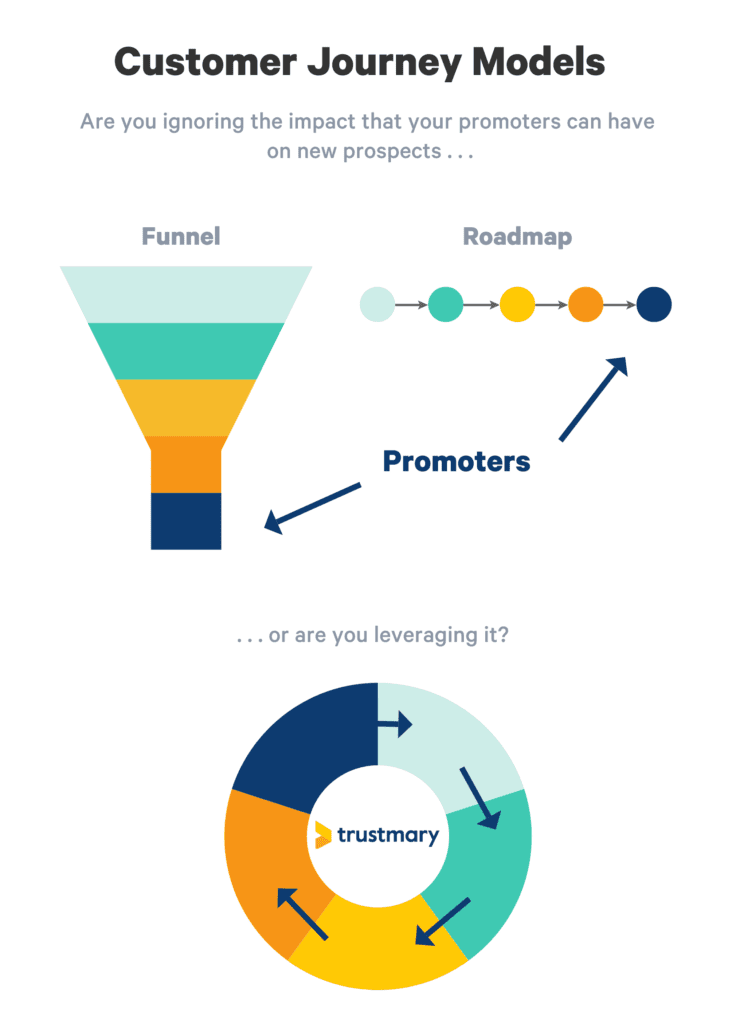
There’s also a belief that CX is a one-time project. In truth, it requires constant attention—gathering feedback, tracking customer behavior, and making regular improvements.
Some think B2B marketing must be dry and technical. But creativity, storytelling, and brand personality play a big role in shaping perception and building loyalty.
Breaking these myths will help create more meaningful customer journeys and plan a better CX strategy to drive retention and long-term success.
Let’s have a look at what a great customer experience results in…
What a Great B2B SaaS Customer Experience Delivers
Maintaining good relations with customers comes with key benefits such as:
1. More Loyal Customers
95% of companies that enhanced their CX observed an increase in customer loyalty, with 84% also reporting revenue growth.
When customers feel valued and supported at every touchpoint. They’re more likely to stay, renew, and grow with your product, reducing churn, cutting costs, and strengthening long-term relationships.
This is only possible with a solid B2B SaaS customer experience that builds trust, satisfaction, and emotional connection.
2. Better Word-of-Mouth
Happy customers naturally share positive experiences with peers.
In B2B, where referrals carry high value, a strong CX encourages recommendations, case studies, and testimonials.
This, in return, boosts credibility and attracts new business through trusted networks. Word-of-mouth marketing statistics reveal that:
- Word of mouth impression results in 5x more sales than a paid impression.
- A 10% increase in word of mouth can increase sales by 1.5%.
- WOMM influences 99% of all B2B purchases.
3. Higher Customer Lifetime Value
When your customers are happy, they stay loyal to your business for a longer time, resulting in a higher customer lifetime value.
Satisfied customers bring in more value as they’re more likely to upgrade, purchase add-ons, or expand usage.
This not only increases revenue per customer but also enhances overall profitability without increasing acquisition costs.
4. Stronger Brand Reputation
When you are consistent with offering a great experience, customers see your brand as trustworthy and dependable.
It shows you're focused on their success, not just selling a product.
Over time, this builds a positive reputation and brand image that sets you apart from other companies. A strong brand image also attracts new customers who value reliability and support.
5. Insights for Growth
A great B2B customer experience isn’t just about support.
But it’s also about learning.
By listening to customer feedback and behavior, you uncover what they need, what’s missing, and where your product can improve.
These customer insights guide smarter decisions and fuel continuous growth. The more you learn from your users, the better you can innovate and stay ahead of the curve.
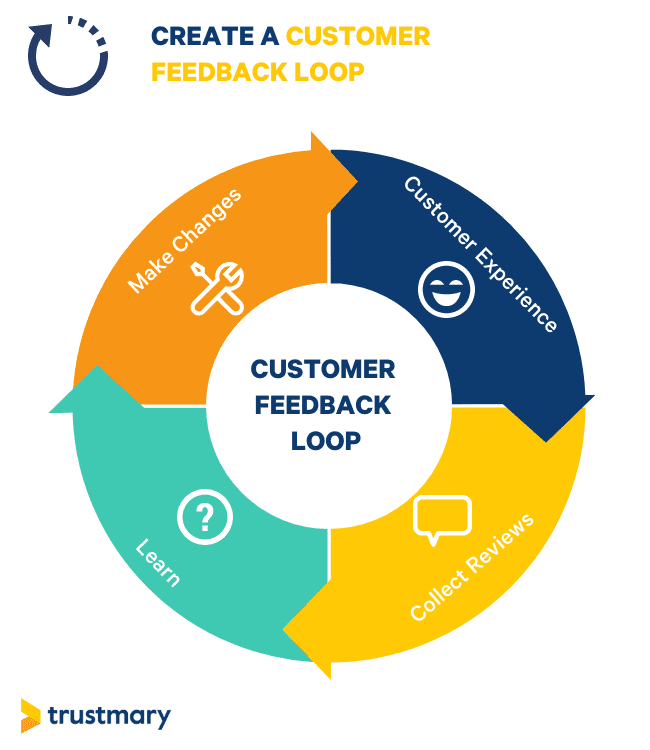
Key Elements of a Winning B2B SaaS CX Strategy
1. Deep Customer Understanding
You can’t fix what you don’t understand.
Start by digging into customer behaviors using customer insight tools to understand where users drop off, what frustrates them, and what keeps them engaged.
Then build real, data-driven personas, not guesses. Learn better about their job roles, priorities, blockers, and what their success goals are.
The better your insights, the more tailored and effective your entire CX strategy will be.
2. Personalized Onboarding
If your onboarding is generic, your users will disengage fast. Instead, personalize it based on user goals, role, and product use case.
Also, don’t overwhelm your users with too many features. Ask them what their goals are and guide them to value fast.
This ensures they don’t feel lost or abandon your product because they couldn’t understand it.
Here’s an example of Canva’s onboarding that personalizes the user's onboarding based on their role and jobs to be done:
Show only what matters, when it matters.
Use short feedback surveys to find friction points early and fix them.
Remember that a strong start always reduces churn and sets the tone for everything that follows, leading to better CX.
3. Proactive Communication
Don’t wait for customers to speak up. Monitor behavioral signals like inactivity, incomplete setups, or skipped features. Reach out with timely tips, nudges, or resources before frustration builds.
Proactive communication isn’t just about fixing issues. It’s about guiding users to value before they drift. That shift turns your product from a tool into a trusted part of their workflow.
4. Responsive and Helpful Support
Quick replies are just the baseline. What users really want is support that understands their context—why they’re stuck, what they’ve tried, and what they need next.
Every support interaction is a chance to earn trust or quietly lose it.
Train your team on how to use real-time product usage data so they can skip the back-and-forth and solve issues on the first attempt.
Measure how quickly you respond and how well you solve problems, then improvise.
5. Intuitive User Experience (UX)
If your product feels confusing, users won’t stick around. A staggering 88% of online consumers are less likely to return to a website after a bad experience.
Whereas a strong UX makes every step feel like a no-brainer.
Track real behaviors like drop-offs, rage clicks, and skipped steps to spot friction fast.
Then simplify.
Streamline actions, highlight value, and help users succeed with less effort. Great UX isn’t about beauty, it’s about clarity that drives results.
6. Consistent Experience Across All Touchpoints
Your brand is judged on how consistent the experience feels across sales calls, product flows, and support chats. When tone, messaging, or service feels disjointed, trust erodes.
Every team should speak the same language and share the same understanding of the customer journey. This consistency builds confidence and keeps users moving forward without friction or second-guessing.
7. Value-Added Content and Resources
Smart content helps users win faster. Skip generic content and old-style help docs.
Instead, offer concise, practical resources, embedded tutorials, tooltips, and short videos that meet users right where they are. Teach through doing.
The right content reduces support load, increases adoption, and turns passive users into power users.
8. Regular Feedback Loops
Don’t guess, ask.
Use tools like Trustmary to capture real-time feedback and reviews at critical feedback points in the user journey.
But feedback is only useful if acted on.
Share what you’ve improved based on input, and users will keep engaging. These loops don’t just improve UX, they build loyalty through transparency and trust.
Challenges in B2B SaaS CX and Solutions
1. Complexity of B2B Relationships
B2B deals often involve multiple stakeholders, each with different goals. This makes it harder to deliver a unified experience. The fix?
Map out all key personas and tailor communication, onboarding, and value delivery for each one. Personalization at scale helps you stay relevant across the buying committee.
2. Longer Sales and Implementation Cycles
Extended timelines often lead to lost momentum and customer fatigue.
To avoid this, break the customer journey into clear, achievable phases and set expectations early. You can use regular check-ins, shared success metrics, and quick wins to keep stakeholders aligned and engaged.
This will help transform a slow process into a guided, confidence-building experience.
3. Measuring Intangible Benefits
Customer experience success is often reflected in things like satisfaction, trust, or ease of use.
These metrics can be difficult to measure directly. To address this, focus on metrics such as:
- Customer sentiment
- Customer Lifetime Value
- Customer Referral Rate
- Average resolution time
- First response time
- Customer churn and retention rate
- Customer Satisfaction Score (CSAT)
- Customer Effort Score (CES)
- Net Promoter Score (NPS)
- Customer emotional intensity
Combining this data with customer feedback helps you understand what’s working and where to improve, even if the results aren’t immediately visible.
4. Siloed Teams
A customer might engage with different teams throughout their lifecycle. This makes it important for all your teams to be on the same page.
They should have the same data access, especially when it comes to customer support. If your teams like sales, marketing, product, and support work in isolation, the customer experience might feel disconnected. This can lead to confusion, delays, and missed opportunities.
To solve this, align everyone around shared CX goals, use a unified customer data platform, and encourage regular collaboration.
Measuring Success: Key Metrics for B2B SaaS CX
1. Customer Retention Rate (CRR)
CRR shows how many customers a company keeps over a period. It's a direct indicator of customer satisfaction and loyalty.
A high retention rate means customers are happy and likely to stay, which saves money on acquisition. It also supports long-term revenue growth.
Tracking CRR helps identify service issues early and encourages better customer experience strategies.
2. Customer Lifetime Value (CLTV)
CLTV measures how much revenue a customer brings in during their relationship with a company.
It’s a crucial metric, especially for growth-focused SaaS models.
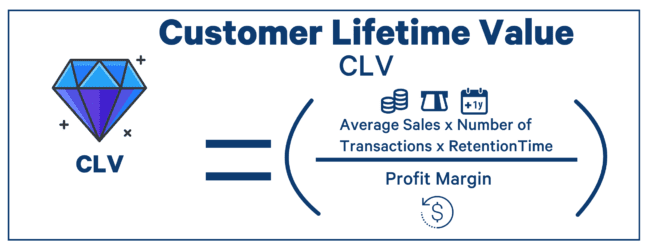
By identifying high-value segments, companies can tailor experiences, boost loyalty, and improve profit margins over time.
3. Net Promoter Score (NPS)
NPS measures customer loyalty by asking how likely they are to recommend your business.
A high NPS signals strong trust and satisfaction, often leading to referrals and organic growth. It’s calculated by subtracting detractors (scores 0–6) from promoters (9–10).
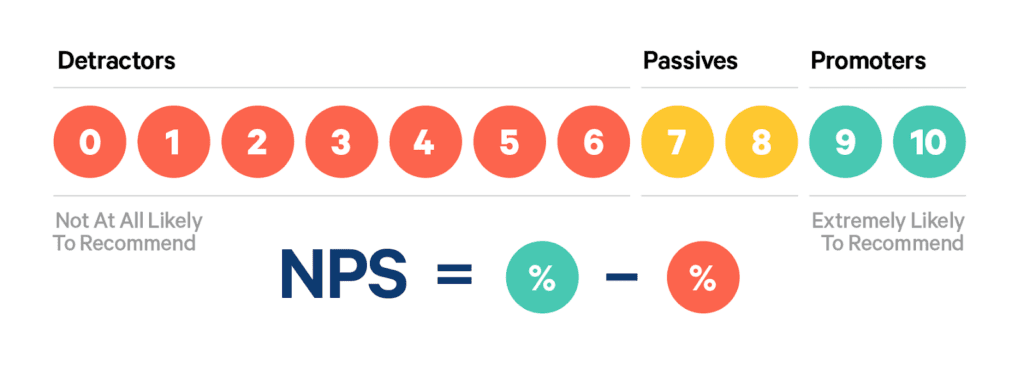
It’s a quick way to understand how customers feel and where you may need to improve.
4. Customer Satisfaction (CSAT)
CSAT tracks how satisfied customers are with a specific product, service, or interaction.
It’s usually gathered through a quick 1–5 or 1–10 scale survey. High scores indicate a positive experience, while low ones point to friction.
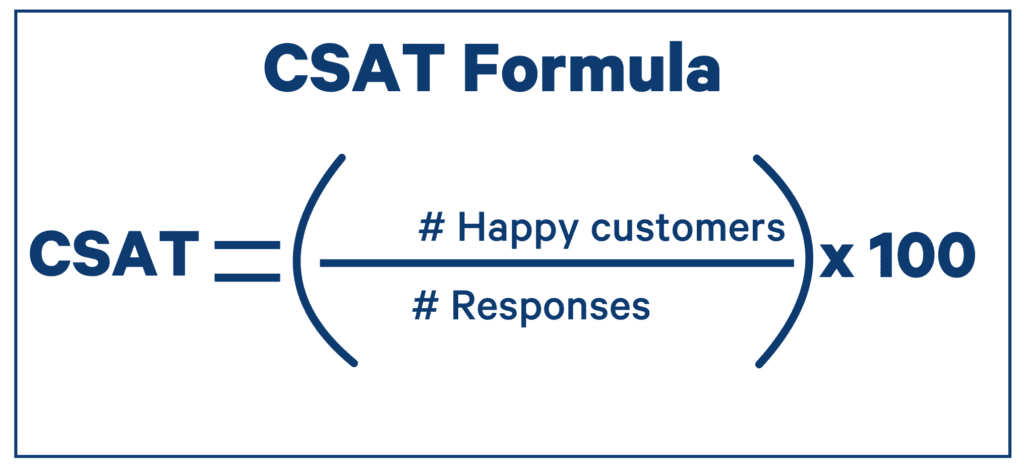
CSAT helps businesses address problems quickly and make improvements that enhance the overall customer journey.
5. Customer Effort Score (CES)
CES measures how easily customers interact with your business, such as solving an issue or using a feature. The less effort required, the better the experience. Whereas, high-effort interactions often drive churn.
CES is especially important for onboarding and support processes.
Hence, by measuring and reducing effort score, businesses can improve satisfaction, boost loyalty, and reduce support costs.
6. Churn Rate
Churn rate shows how many customers stop using your product over a set time.
A rising churn rate signals dissatisfaction, poor onboarding, or weak product-market fit. Tracking churn helps identify issues fast and refine retention strategies.

Reducing churn leads to more stable revenue and stronger long-term customer relationships, which are essential for scaling a SaaS business.
Essential Tools to Improve Your B2B SaaS CX
The right tools can uncover friction, reduce churn, and turn users into loyal advocates. Here’s a breakdown of tool categories that directly impact customer experience, with top examples for each.
- CRM Systems - CRMs centralize user data so your team can respond with context. They help personalize outreach, track customer history, and reduce back-and-forth.
Tools to try: HubSpot, Salesforce, Pipedrive - Help Desk Software - These platforms centralize support tickets, automate resolutions, and measure response times. They are built to reduce backlogs and keep customers from slipping through the cracks. Tools to try: Zendesk, Freshdesk
- Customer Feedback and Social Proof Tools - These tools let you collect and share what customers think through reviews, surveys, and testimonials. Honest feedback helps you improve, while public praise builds trust with new users. Tools to try: Trustmary
- Onboarding Platforms - Customer onboarding platforms guide new users through product features using interactive tours, checklists, and tooltips. This speeds up adoption and reduces confusion during the first few days. Tools to try: Userpilot, Appcues
- Live Chat Tools - These platforms enable real-time communication between your team and users, helping resolve questions instantly. This boosts conversions and improves customer satisfaction. Tools to try: Drift, Intercom
- Product Analytics Platforms - Product analytics platforms track user behavior inside your SaaS product, helping you understand how people engage with features. This data helps optimize product decisions and customer experience. Tools to try: Mixpanel, Amplitude
- Email Marketing Platforms - These tools help in planning better outreach campaigns and keeping users engaged at every stage. They help automate emails based on user behavior, such as onboarding sequences, reminders, or upsell campaigns. Tools to try: Mailchimp, Lemlist
- Customer Success Platforms - These tools monitor customer health, usage trends, and renewal risk so you can proactively support users. They’re essential for reducing churn and boosting retention. Tools to try: Gainsight, Totango
- Knowledge Base Software - Knowledge base tools let you build searchable help centers, allowing customers to solve problems without contacting support. This improves user satisfaction and reduces ticket volume. Tools to try: HelpDocs, Document360
- Voice of the Customer (VoC) Programs - VoC tools collect feedback from surveys, reviews, and conversations to give you insight into what customers truly want. This helps teams prioritize improvements that matter most. Tools to try: Trustmary
The Future of B2B SaaS CX
The future belongs to businesses that treat CX as a long-term growth strategy, not just a support task. This is only possible with faster support, personalized journeys, and predictive insights that help you grow.
AI tools now help teams predict issues, recommend next steps, and deliver tailored solutions at scale. Self-service tools like chatbots and help centers will continue to grow in demand.
Gartner says 80% of B2B sales will soon happen online, making digital CX more important than ever. So, make sure you have your solid B2B customer experience plan ready. Implement the correct strategies and tools, take customer feedback regularly, and act accordingly for enhanced CX.